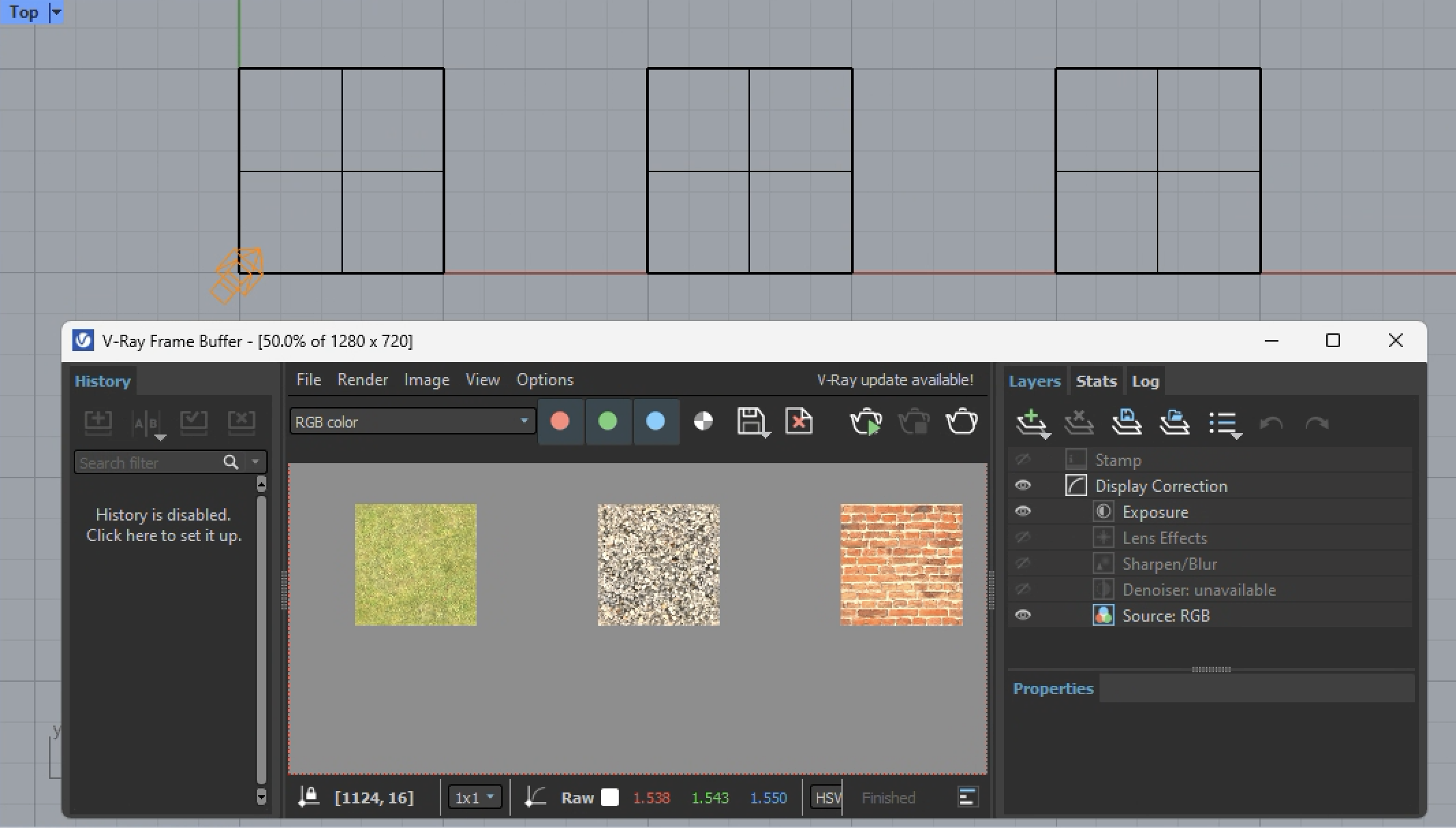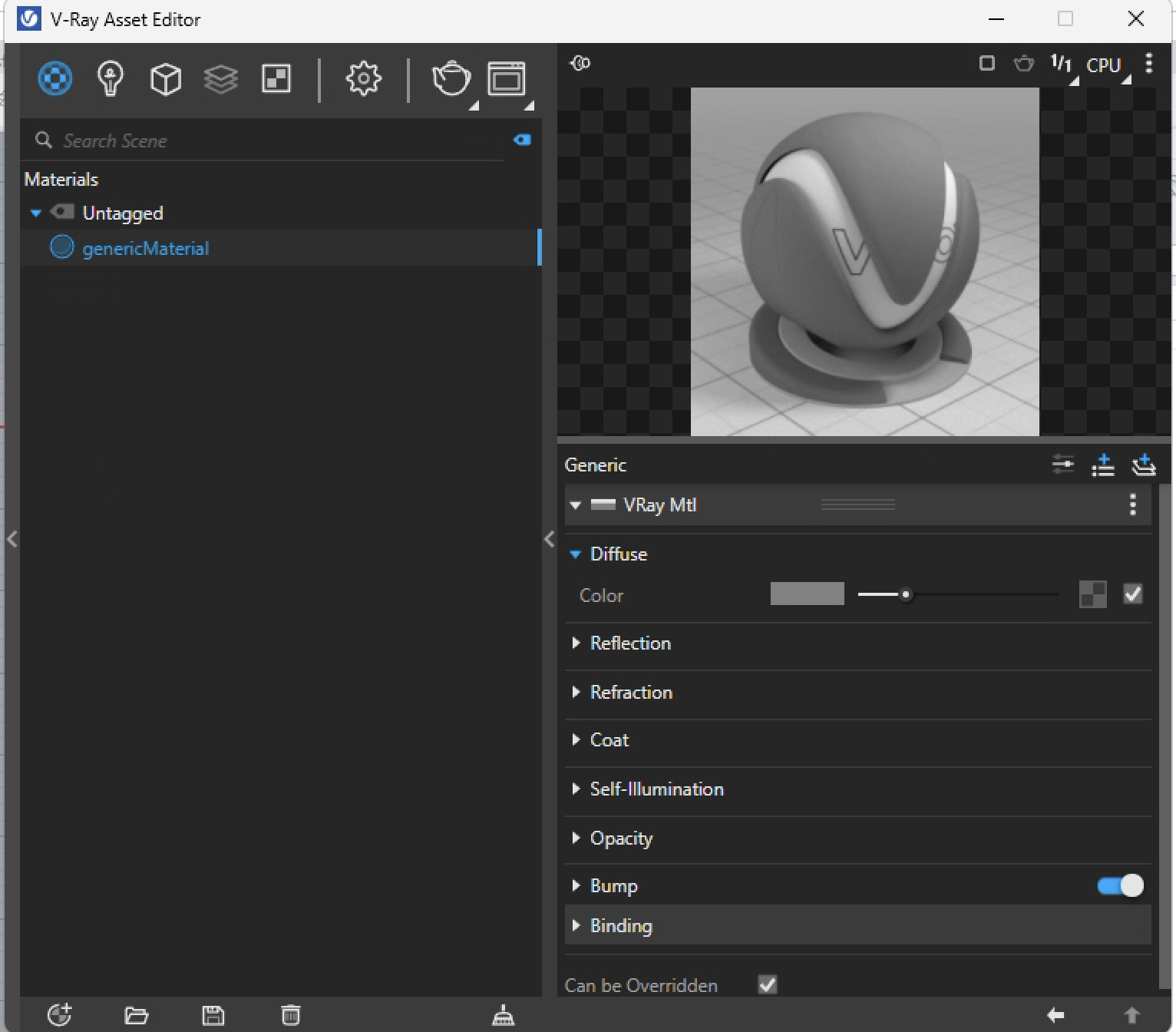
COMPUTER
AIDED
ARCHITECTURAL DESIGN
Workshop 19 Notes,
Week of December 8, 2024
These notes were complied following a last minute update to the VRay Cosmos Materials Library installation on the School of Architecture computer system making it more pragmatic to use. The sequence of screen captures below indicates the essential steps needed.
1. Initiate a V-Ray material in the V-Ray asset editor, such as the generic material below.

2. Select the greater than symbol ">" (highlighted with the green oval) on the left hand margin of the V-Ray Asset Editor to expand its window to the left, and select the "Browse Materials in Cosmos" option.
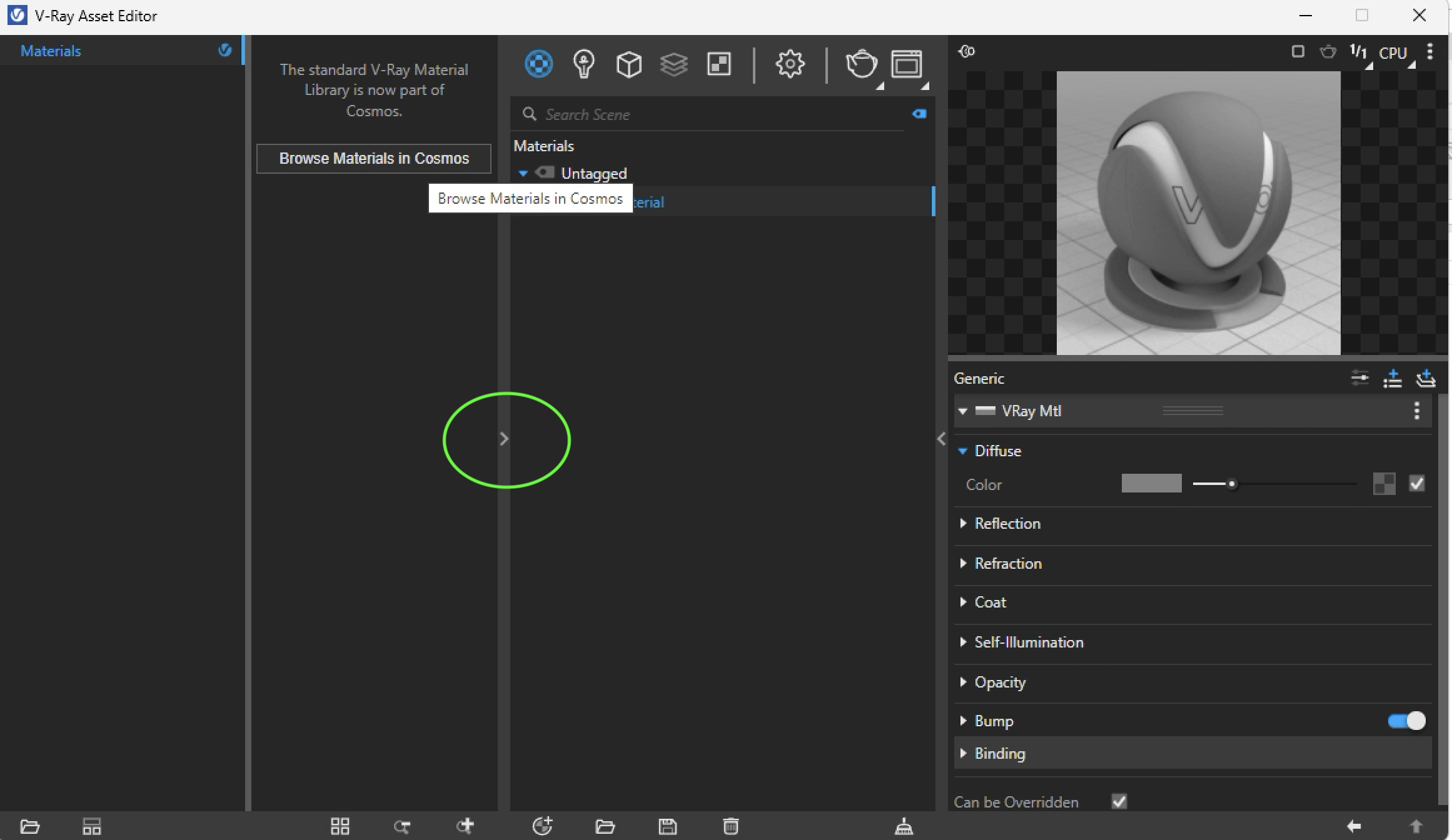
3. The window is now open for you to browse the materials; however, they are not accessible until you select the "Download All" button below (you can also Download smaller parts of this library, not shown here).
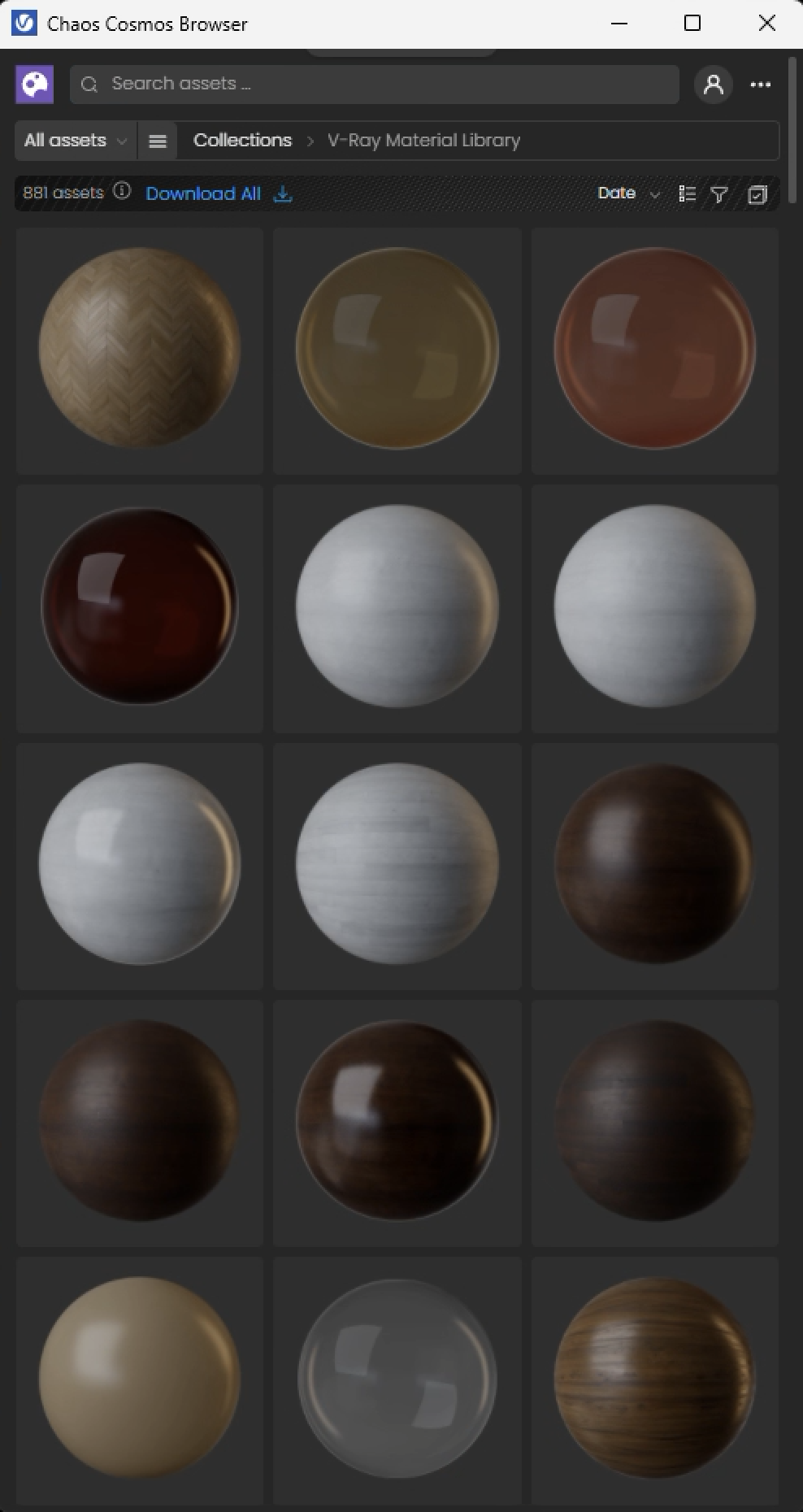
4. You will be prompted to Signin to your Choas web site or create an account for one. This is free. Alternatively, you can do this through a Google Account if you havd one (see Step 6).
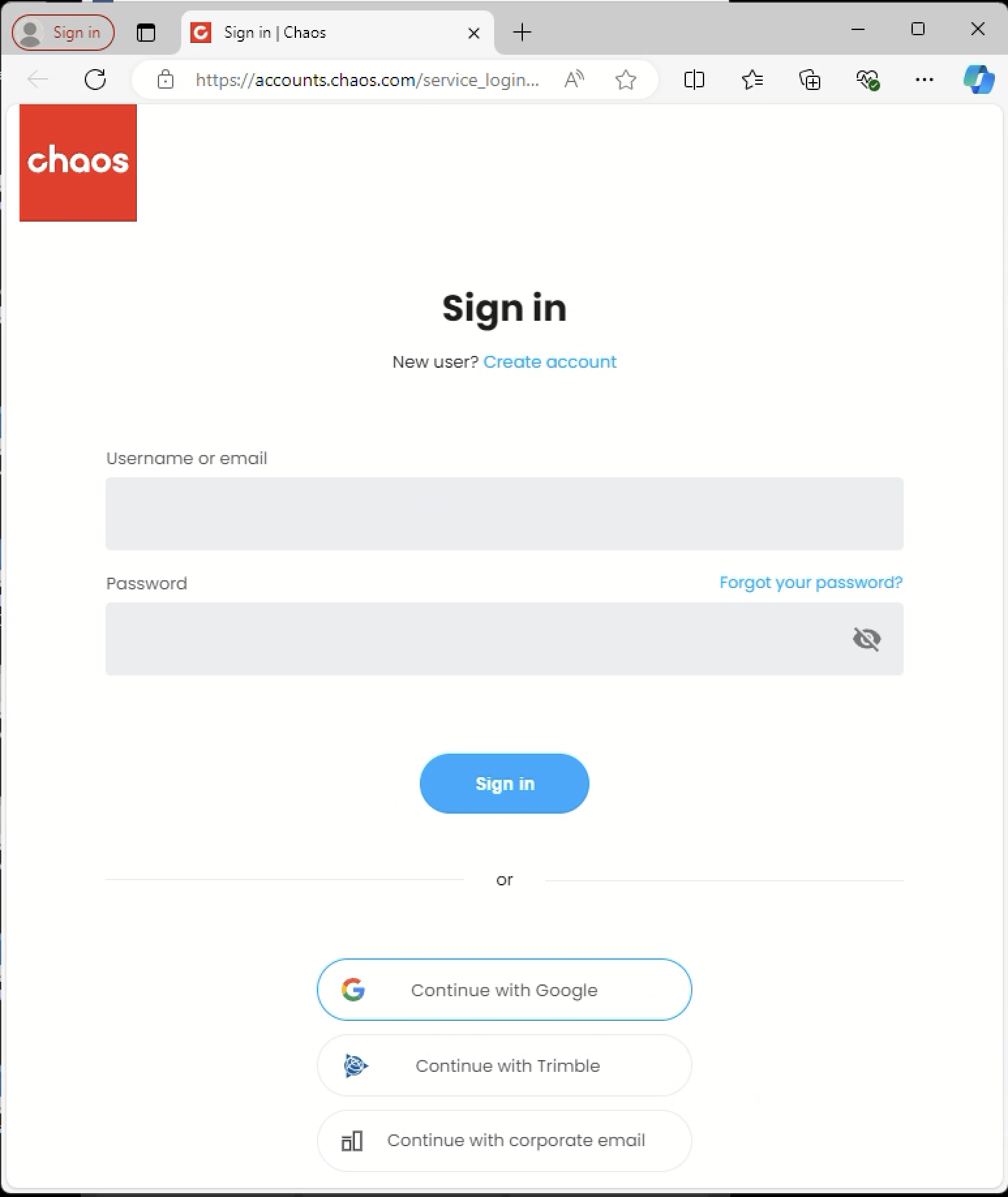
5. Enter your email address and password (once you've created the account).
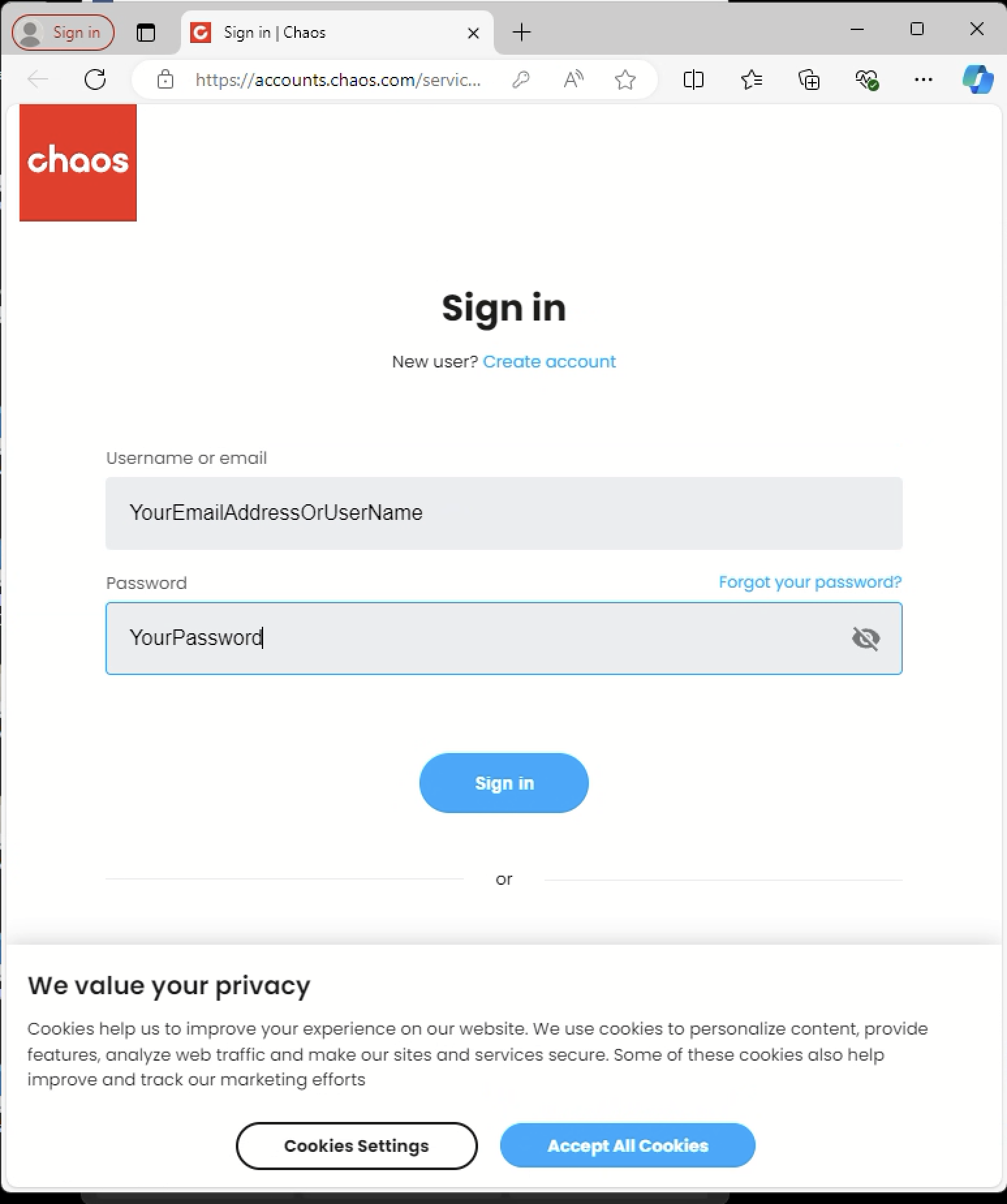
6. Alternatively, scrolling down by Choosing the "or" option in step four, you can signup through your Google account.
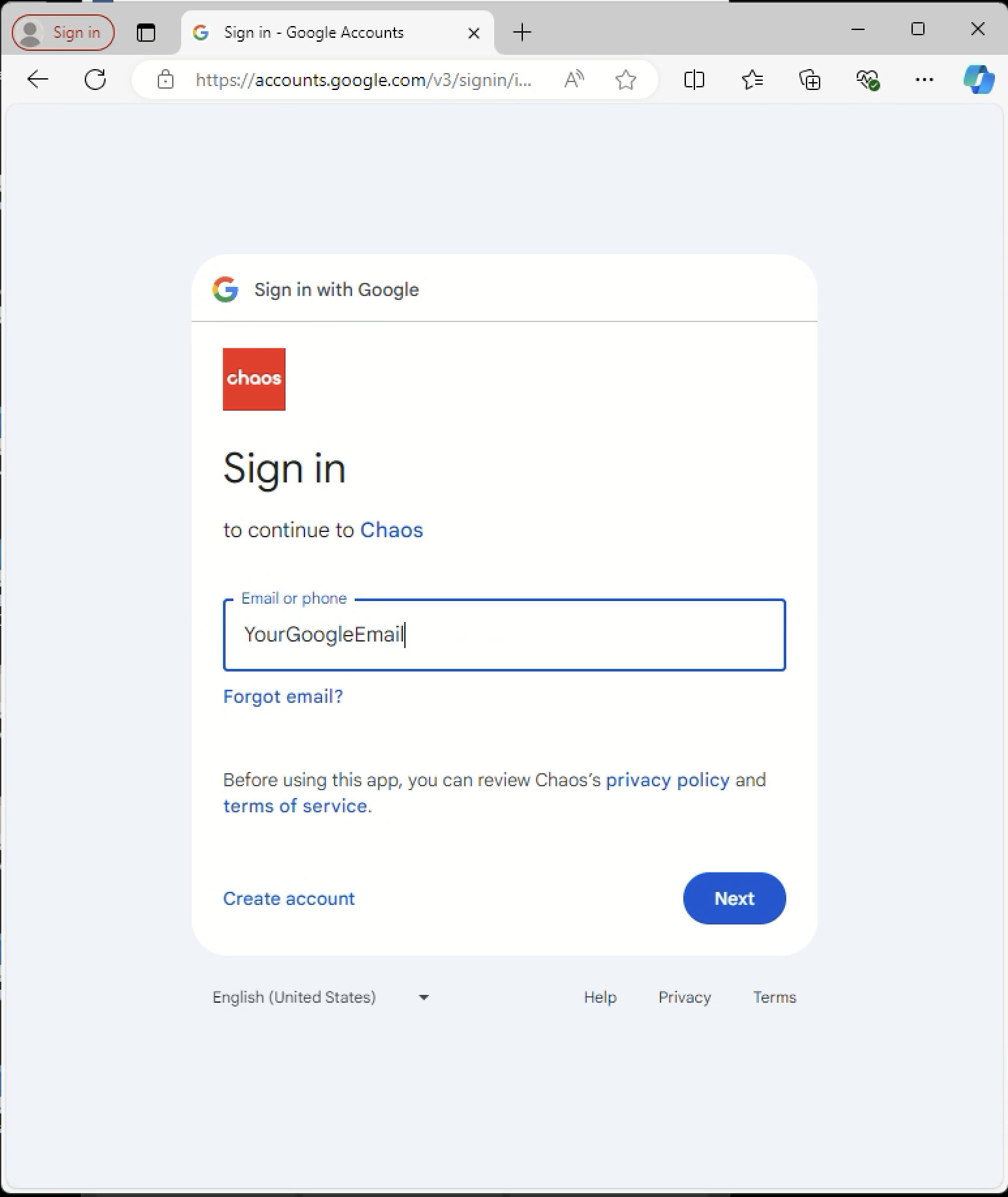
7. Once you've signed in through you Google account you can close the signin window.

8. Note that te materials will indicated that they are downloaded by displaying a check-mark within a blue circle as indicated below.
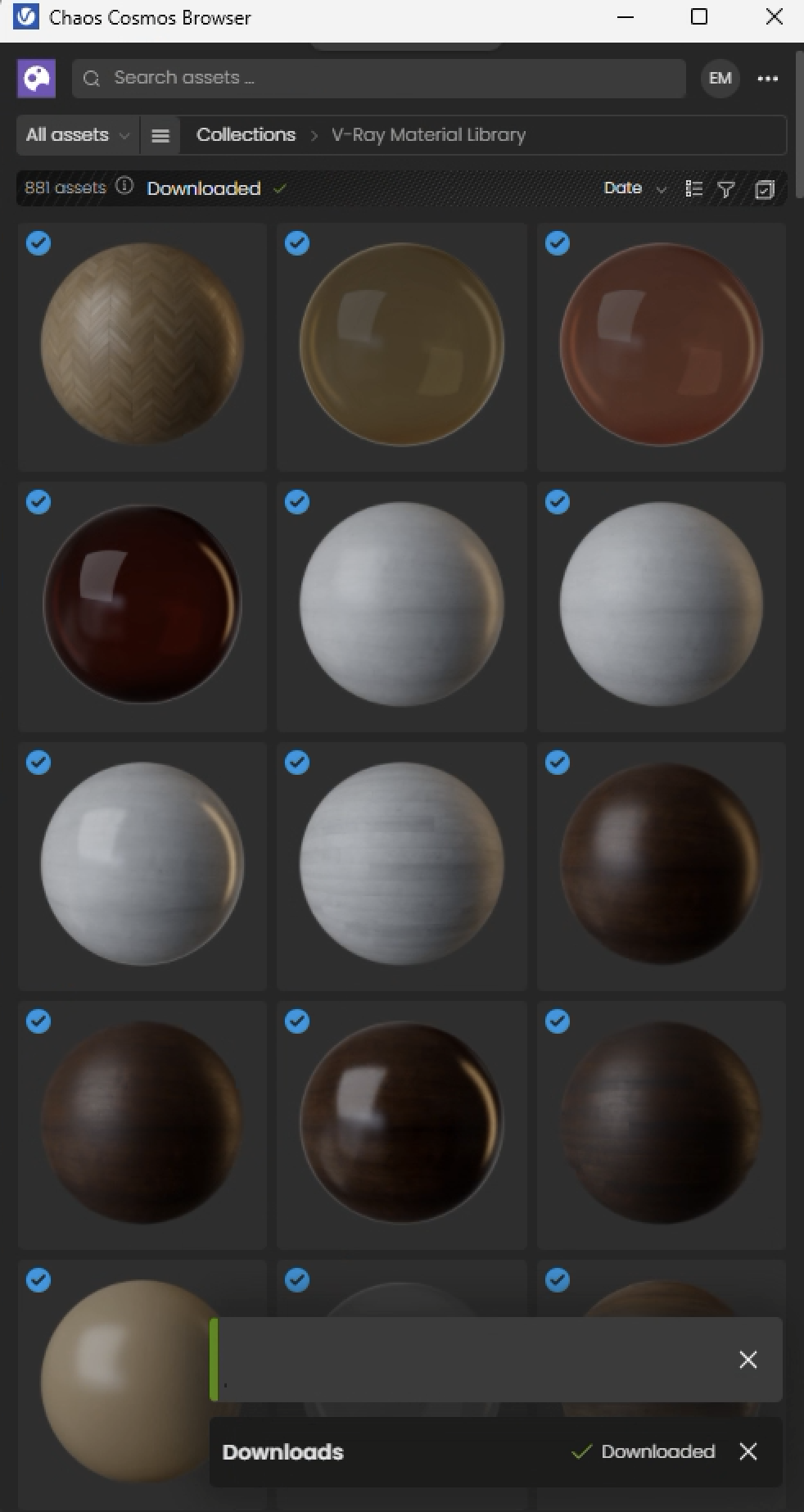
9. Next, select the three horrizonal white bars to the left of the word "Collections" in the image above, to open up the Collections libraries.
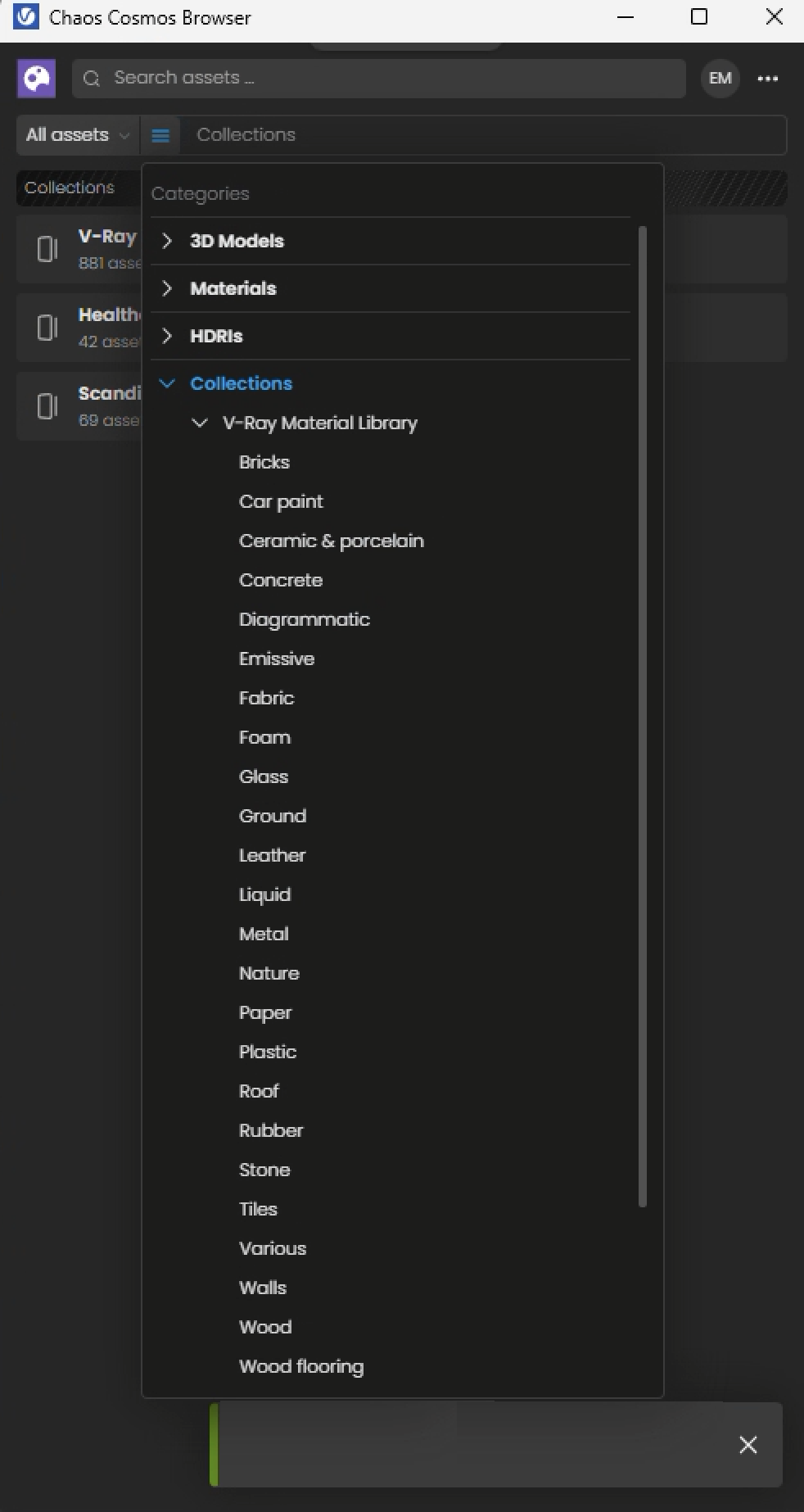
10. Select the V-Ray Material Library and the Ground sub-library

11. Select the material you wish to use (e.g., "Grass C 200cm" and then the right pointing arrow symbol to import it into the materials in use for the current Rhino file.
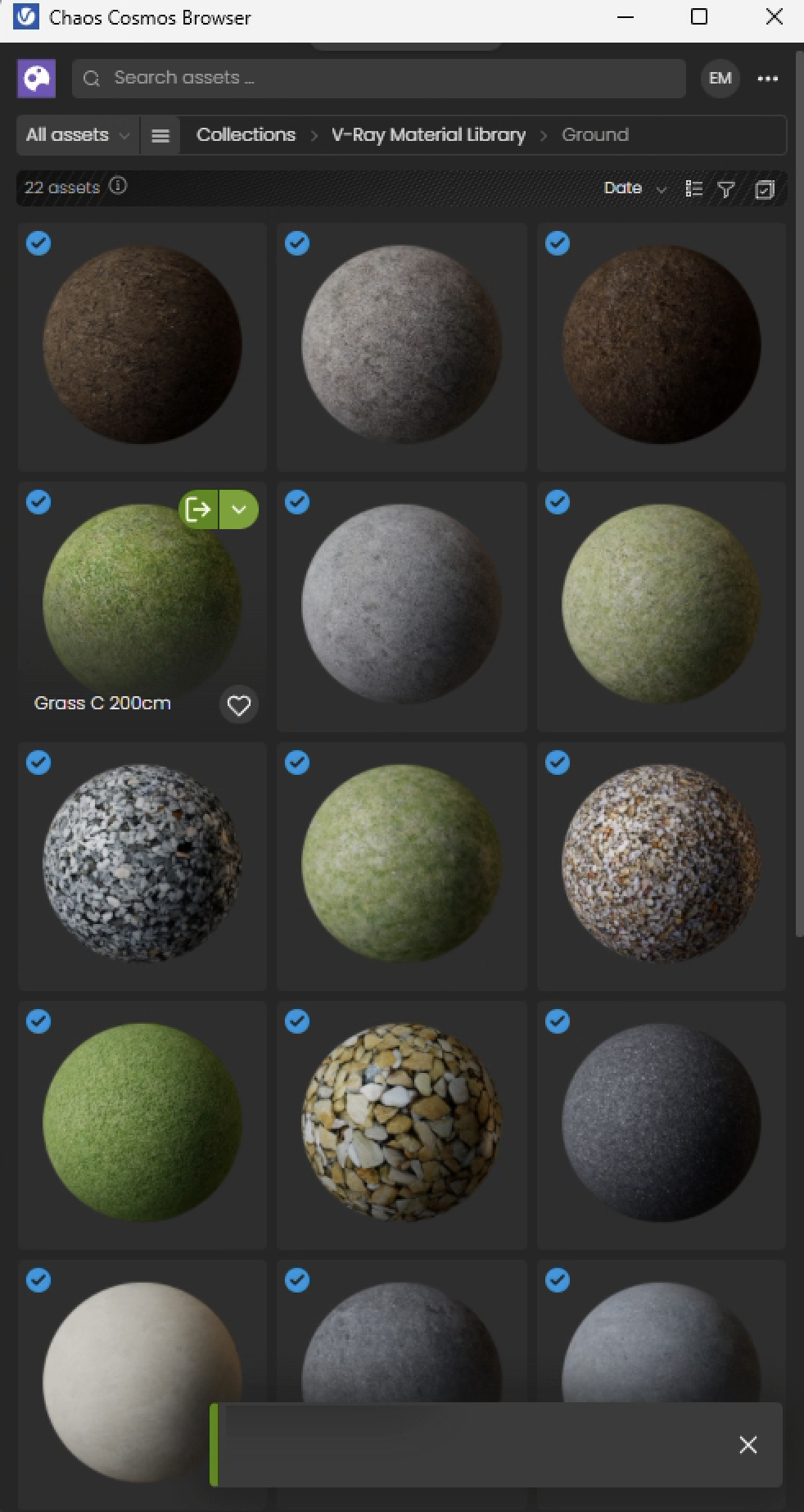
12. The material becomes a part of the Materials list for the current Rhino File.
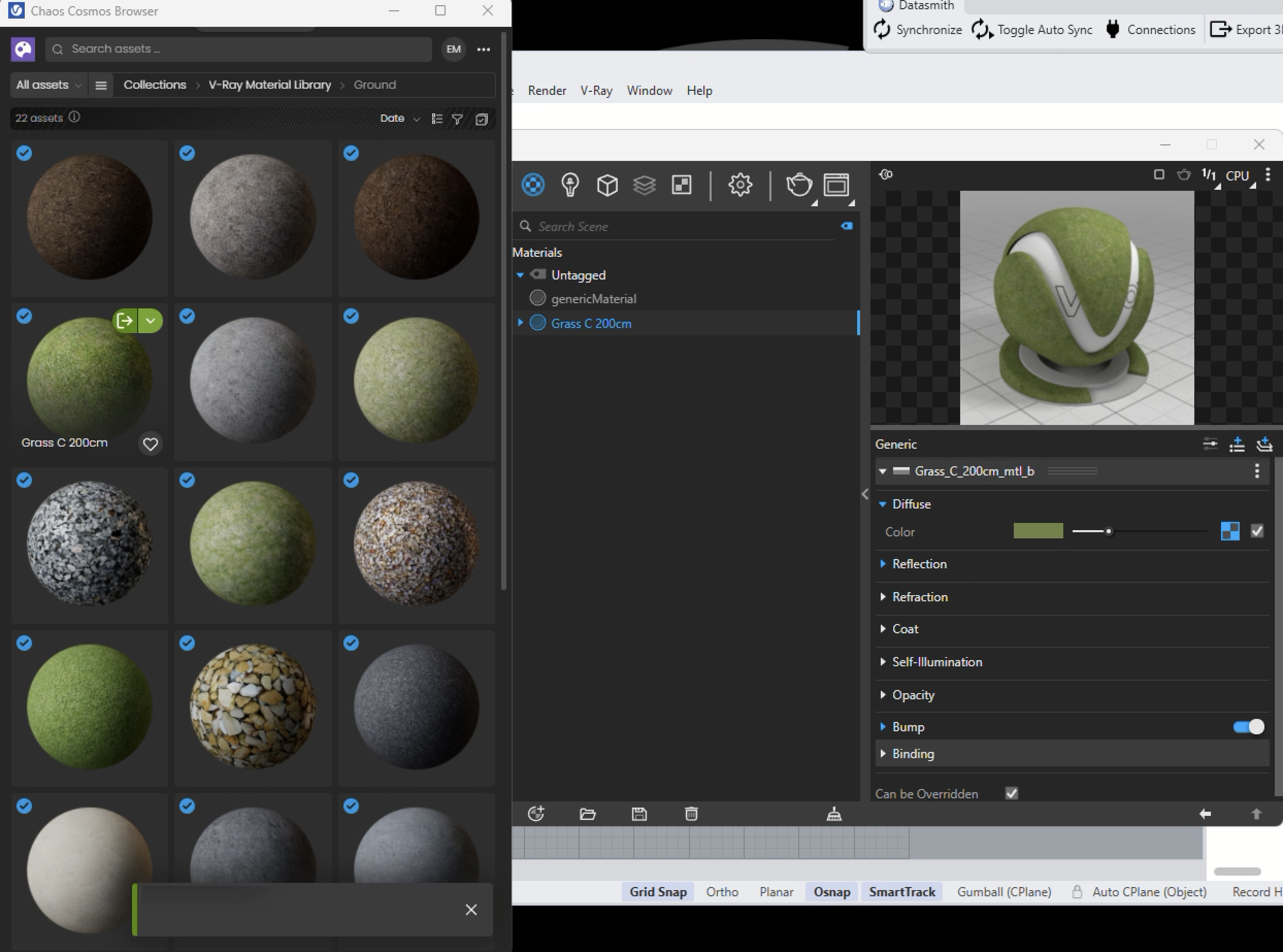
13. Similarly the grey gravel material "Gravel C01 80cm" is imported from the above collection and the brick material "Bricks Weathered E01 100cm" from the "Bricks" collection is imported into the Materials for the current Rhino file below.
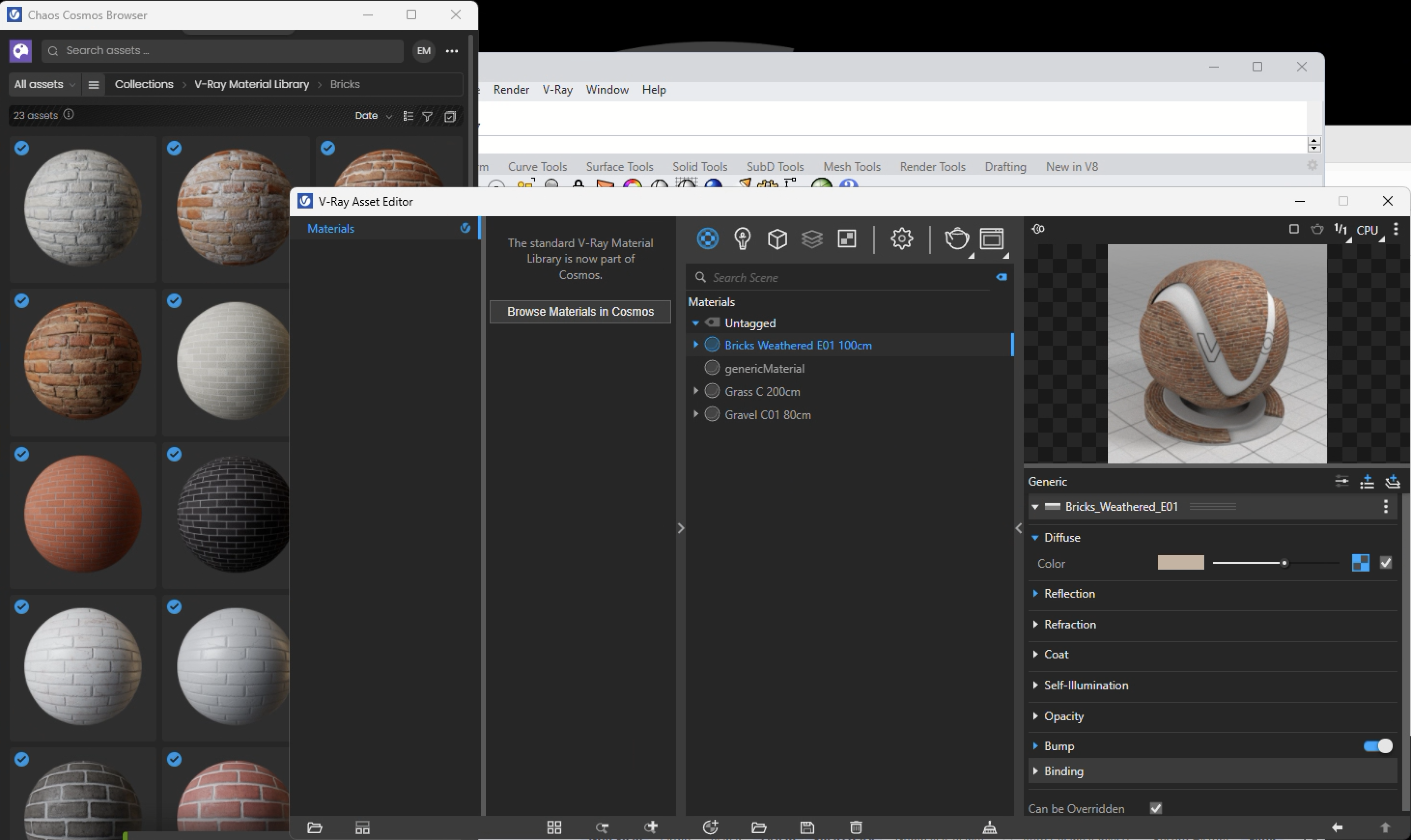
14. For this test, use the V-Ray compact lighting sub-menu to pick the V-Ray sun.

15. Open the V-Vray Compact menu and lighting sub-menu, and select the Sun creartiong panel with the left-mouse-button.
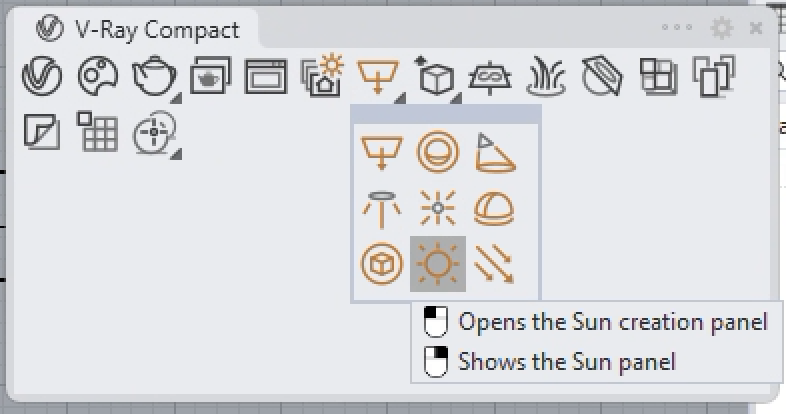
16. For this initial test you can select the check -mark for Manual control to create a simple V-Ray sun for the current Rhino file.
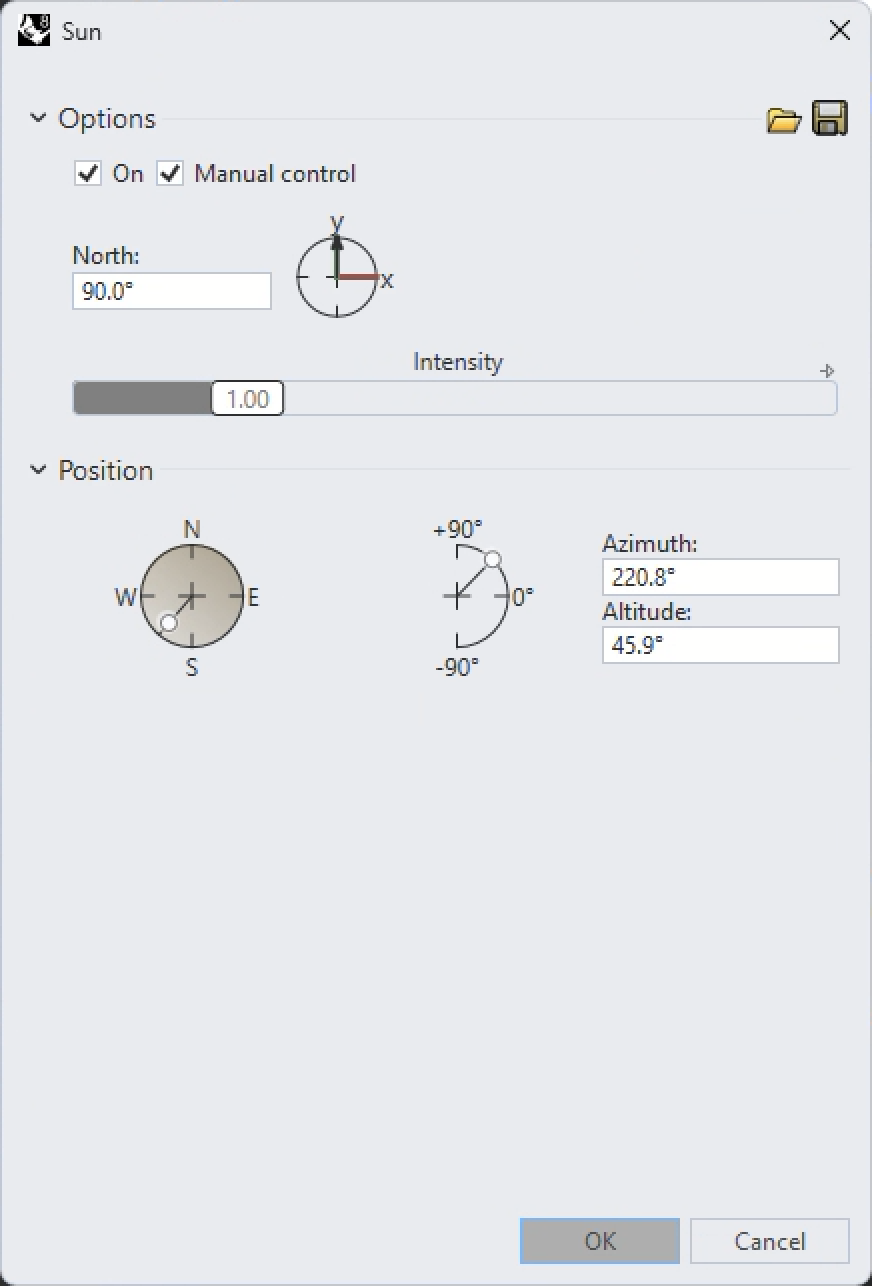
17. Render the materials in the plan view. Note that these materials can be rendered and saved with closeups to "jpg" files one at a time and used to create texture maps independent of the Cosmos library, similar to what we had done in the workshop. Howeve, this isn't really necessary as long as you work over the network with your file in the CLASSES server.

18. Saving the file on the Classes server will now ensure that the materials reload automatically after signing out of Rhino and the VMWare environment. That is, below the normal save file dialog has been used, and the file was saved to the Collab folder of the ARCH2710 classes server. You can now logout of Rhino and the WMWare session and these materials will remain assigned.
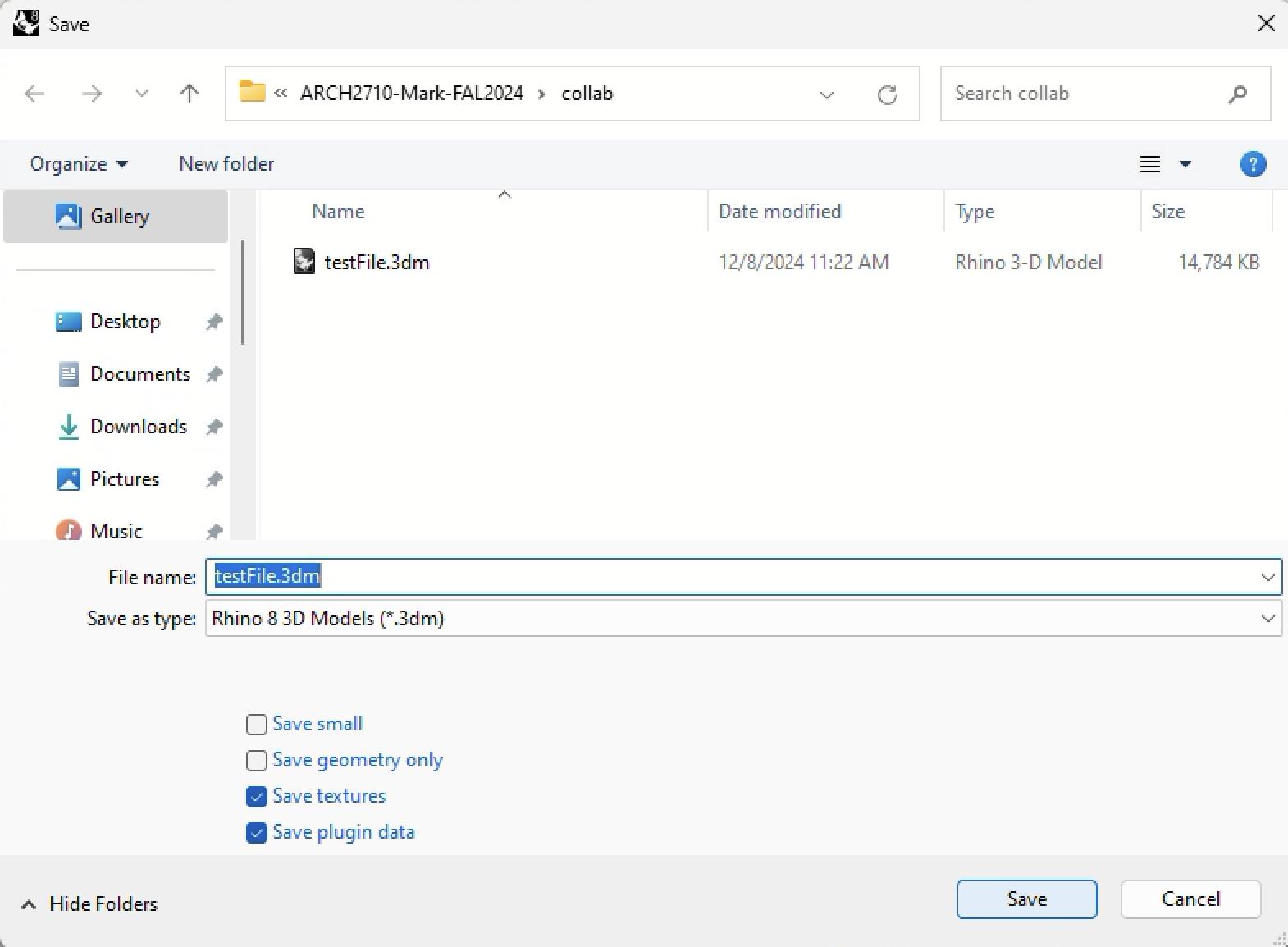
19. Starting out in a new WMWare session, activate Rhino and load the Rhino file used in the previous work session.
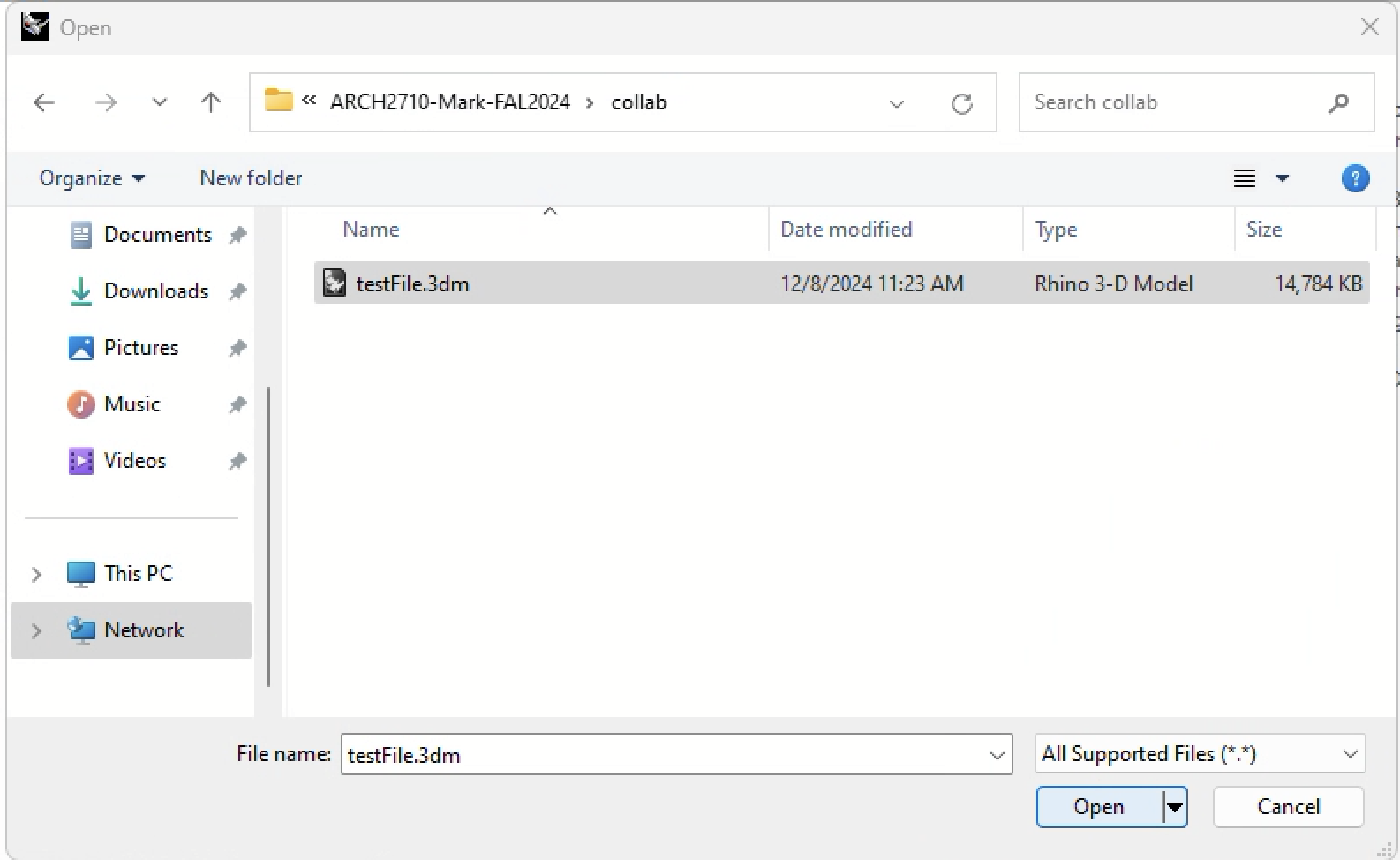
20. Activate the V-Ray rendering option, go the plan view, and do a test rendering, and you should find that the materials are already assigned to same surfaces in the Rhino file.
